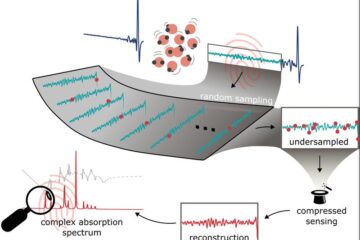New study reveals gender disparity in anti-TNF treatment for rheumatoid arthritis

Findings reported today at EULAR 2007, the Annual European Congress of Rheumatology (EULAR) in Barcelona, Spain, reveal a treatment disparity between female and male patients with rheumatoid arthritis (RA). Data from a study at the Karolinska Institute, Sweden, show that women receive anti-TNFs (very effective but expensive modern medications against this disease) at a higher perceived level of disease activity and when they are reporting more severe pain than their male counterparts.
Whilst some disease activity measurements were found to be higher for women than men, and self-reported disease activity by the patients themselves echoed this, the physicians’ global assessments showed little difference between the level of disease in the men and women of the study group.
Lead researcher Dr Ronald van Vollenhoven comments, “Women are known to have consistently worse long-term outcomes in rheumatoid arthritis than men. To date, it has been unclear if this is due to factors intrinsic to the disease or because of gender-related prescribing. Our study does not show a gender-bias as such, but does indicate that physicians to some extent ‘discount’ the subjective measures of disease activity, which we found to be higher in women, and let their decisions be driven almost solely by objective markers of the disease. As a result, women are receiving anti-TNFs at a higher level of disease symptoms than men. Because the goal of any treatment for RA must be to relieve the patients suffering, it is not clear that this approach is the right one.”
The study analysed baseline variables for the patients on RA who were started on anti-TNF treatment in the STURE Registry (the Stockholm TNF-alpha follow-up registry). When anti-TNFs were first prescribed to the 644 study participants, the level of their RA severity was logged, as measured according to Disease Activity Scale 28 (DAS28) which takes into account the severity of disease across the 28 joints most commonly affected by RA.
Each participant’s Erythrocyte Sedimentation Rate (ESR), which measures the level of inflammation, was also noted along with their Swollen Joint Count (SJC) and Tender Joint Count (TJC). Furthermore, both patients and their physicians completed a global assessment of disease activity, pain and physical activity (5 point scale questionnaire).
DAS28 scores at initiation of anti-TNF treatment were found to be significantly higher for women than for men (DAS28 was 5.53 for women, 5.04 for men, p=0.0006) and women had higher Tender Joint Counts (9.62 compared to 8.41 for males, p=0.066). The women in the study also had significantly higher ESR scores, although the authors suggest that this could be explained in part by the female hormone oestrogen, which affects tends to raise the ESR.
With regard to the more subjective self-reporting on the disease, through the patient-completed global health ratings, women also reported significantly worse global health (as measured by VAS and HAQ-disability index). However, the physician-completed global health ratings were equivalent for men and women.
Dr Ronald van Vollenhoven comments, “This study shows the importance of taking into account both objective and subjective measurement scores in treatment decisions. It is our hope that these data will help redress this imbalance and ensure equal prescribing and disease management for all.”
Media Contact
More Information:
http://www.eular.orgAll latest news from the category: Health and Medicine
This subject area encompasses research and studies in the field of human medicine.
Among the wide-ranging list of topics covered here are anesthesiology, anatomy, surgery, human genetics, hygiene and environmental medicine, internal medicine, neurology, pharmacology, physiology, urology and dental medicine.
Newest articles

A novel universal light-based technique
…to control valley polarization in bulk materials. An international team of researchers reports in Nature a new method that achieves valley polarization in centrosymmetric bulk materials in a non-material-specific way…

How evolution has optimised the magnetic sensor in birds
The magnetic sense of migratory birds is probably based on the protein cryptochrome 4, and a genetic study has now provided further support for this theory. A team of researchers…

Molecular Fingerprint Beyond the Nyquist Frequency
Ultrafast laser spectroscopy allows the ascertainment of dynamics over extremely short time scales, making it a very useful tool in many scientific and industrial applications. A major disadvantage is the…





















